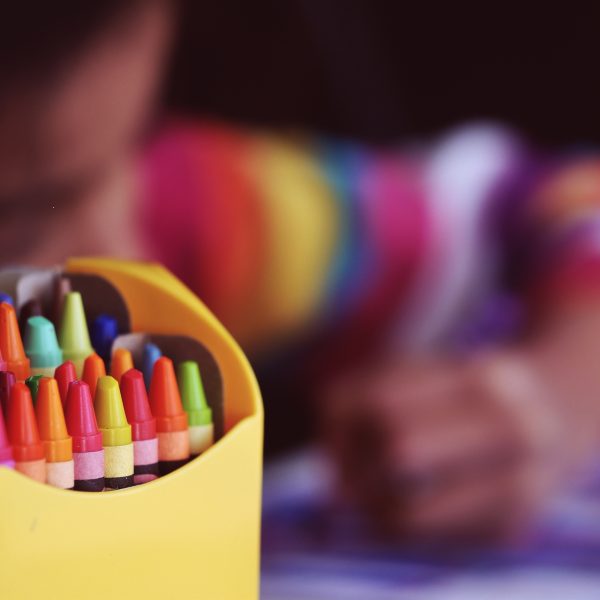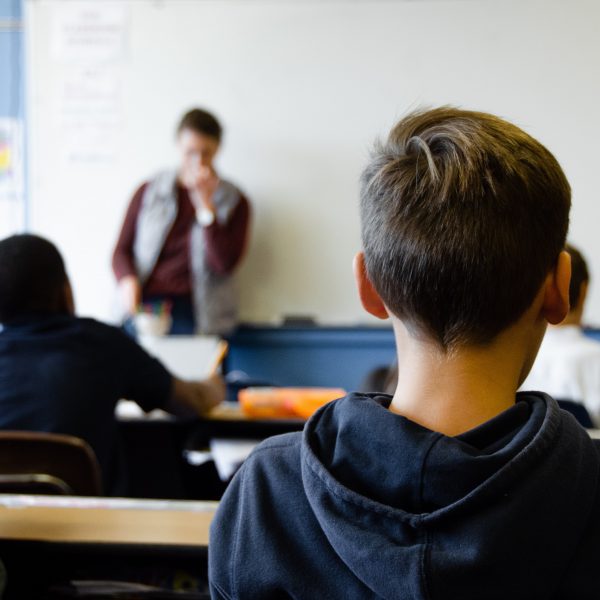The keys to school readiness are hearing, vision and communication

As the new school year begins, parents are often busy with new school shoes, covering schoolbooks and hunting out the right lunchboxes and pencil cases to get their children through.
However, often overlooked in preparing children for school are the three important pillars of hearing, vision and communication. These form the bedrock of a child’s educational journey, playing pivotal roles in their ability to absorb, engage and thrive in today’s busy classrooms.
Listening: A gateway to learning
With universal newborn hearing screening we now routinely detect children with hearing losses at birth.
However, the newborn screen will not always identify mild, single-sided or progressive permanent losses that develop over childhood, nor will they identify children who develop ‘glue ear’ – this common childhood condition often includes treatable hearing loss that can go unnoticed.
A lot of school-age children will experience mild to moderate hearing difficulties, which may not be recognised until the classroom teacher starts to notice delays in learning and behaviours like inattention and difficulty following instructions.
A recent University of Melbourne study involving over 1200 primary school children, found almost five per cent of the children tested had a previously undetected hearing disorder.
Even a mild hearing loss in the classroom can disrupt learning by impeding a child’s capacity to interpret spoken language clearly, follow instructions, engage in discussions or grasp crucial nuances during lessons.
There is also the effect of increased listening effort as a child with mild loss attempts to compensate for the partial signal received, making school starters even more worn out and irritable.
It is not only what we can hear, but how we can manage competing sounds. There is growing evidence that the poorer a child’s ability to listen in a noisy environment, the greater the risk of developing literacy delays.
An audiology assessment or participation in a school-based hearing screening program should be on the checklist for every school starter to ensure that no child faces unnecessary hurdles, due to undetected hearing issues, which can be remediated.
Good vision: supporting school readiness and positive learning experiences
80 per cent of a child’s learning occurs through the eyes, making clear and effective vision a cornerstone for positive school learning experiences.
Vision problems have been linked to reading difficulties, impaired learning and lower achievement test scores, so detecting and addressing such visual challenges early on is crucial.
As children advance in their academic journey, tasks like perceiving colours, reading from the board and increasingly smaller print books, and interacting with electronic devices place increasing demands on their visual system.
Parents and educators play a pivotal role in optimising a child’s visual health.
Look out for signs of vision problems, including sitting too close to the TV, difficulty maintaining their place while reading, holding books close, reluctance to engage in reading and close-up tasks, tilting the head, closing one eye, rubbing the eyes, complaining of headaches and displaying a short attention span.
While these signs may not conclusively indicate a vision problem, scheduling a proactive eye check-up can rule out potential issues, paving the way for uninterrupted learning and academic success.
Speech production and language development: the building blocks of communication
Language – understanding and using words and sentences to express oneself – is a key element of effective communication and is critical for the development of reading and writing during the school years.
Children who enter school with a robust language foundation often exhibit enhanced reading comprehension, expressive abilities and better overall academic performance.
Nurture your child’s linguistic skills by encouraging language-rich environments at home and in early childhood settings. Read aloud with children, engage in conversations and expose them to diverse vocabulary.
Additionally, early identification and support for children facing language delays or disorders can ensure equitable opportunities for academic success.
Communication is not just about the words you say, but how you say them. By the time a child is ready to start school, their speech should be easily understood by a stranger. You might be able to understand everything your child says (you speak to them every day), but would a new teacher or a new friend understand them?
They might not say every word or every sound perfectly, but can they get their message across? This is so important for a child’s learning, not only in the classroom but on the playground, on the sports field and on weekends.
Research shows that certain speech sound production difficulties are associated with difficulties in literacy (reading and spelling) in the later school years.
Some questions you might want to ask yourself: Is your child hard to understand by you or other family or friends? Are their words unclear? Are there several sounds they cannot say? Do vowels (eg ‘oo’ or ‘ee’) sound unusual? Do they still drool more like younger children, or have trouble chewing? Are sounds and words produced differently each time they come out? Are they repeating sounds (stuttering)?
If you answer ‘yes’ to any of these questions it might indicate a challenge with speech production. The rule of thumb is “the earlier the better” when it comes to intervention, and you can book an appointment with a local speech pathologist for a speech assessment if you are concerned.
Collaborate for comprehensive readiness
Addressing hearing, vision, speech and language development collectively forms a holistic approach to ensuring school readiness.
Prioritising these foundational elements – keen hearing, sharp and effective vision, robust language skills and clear speech – sets the stage for a generation of students ready to excel academically, thrive in their educational endeavours and form meaningful social connections.
Through concerted efforts and heightened awareness, we can pave the way for every child to embark on their academic journey, equipped with the tools they need to succeed.
Popular

Policy
Practice
Provider
Quality
Research
Workforce
Beyond the headlines: celebrating educators and the power of positive relationships in early learning
2025-07-07 10:00:24
by Fiona Alston

Workforce
Policy
Quality
Practice
Provider
Research
ECEC must change now, our children can’t wait for another inquiry
2025-07-02 07:47:14
by Fiona Alston

Workforce
Quality
Practice
Provider
Research
Beyond the finish line: Championing child protection one marathon at a time
2025-07-08 09:15:32
by Fiona Alston













